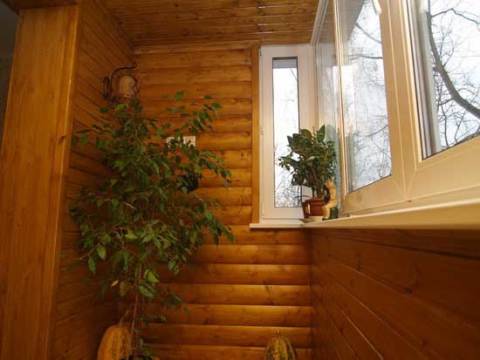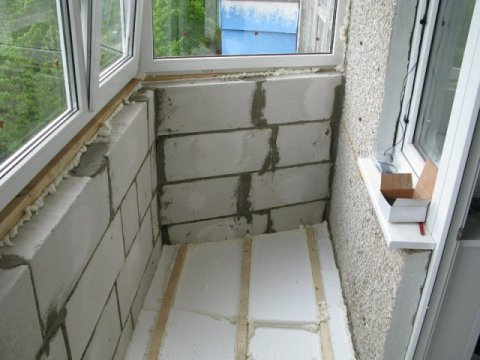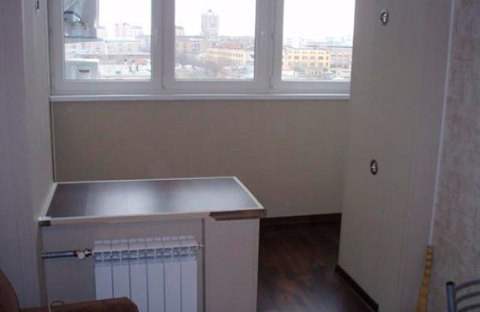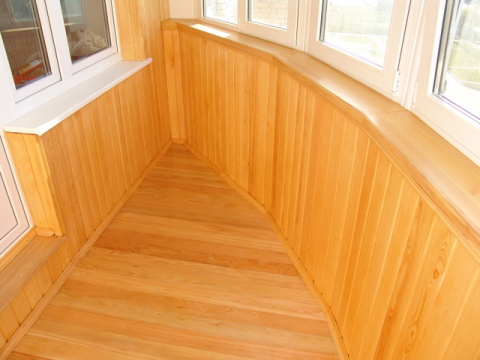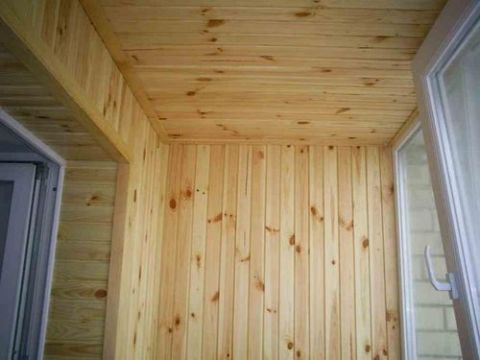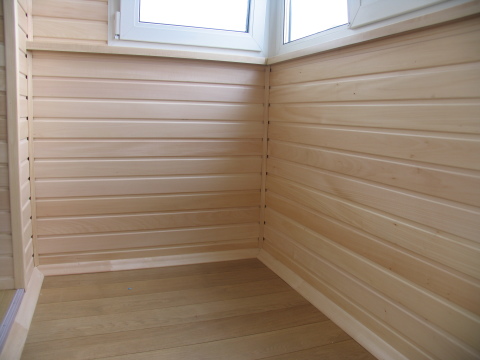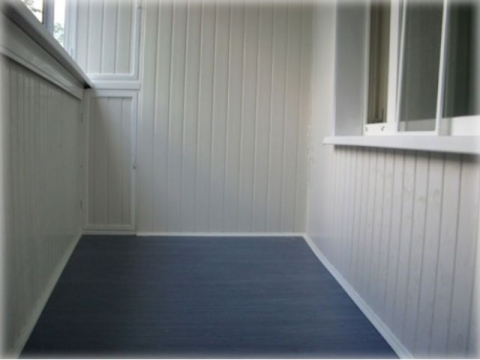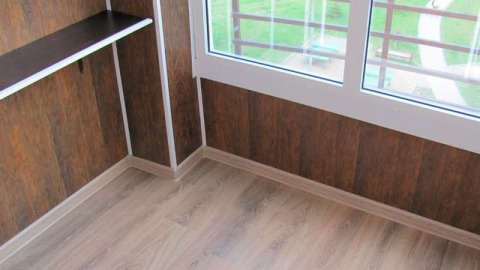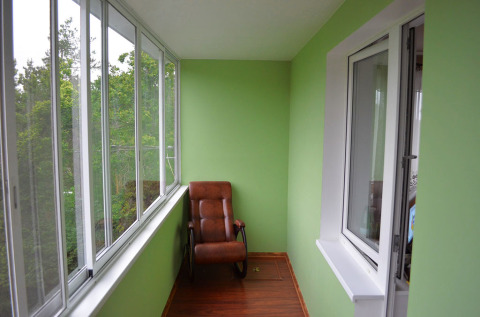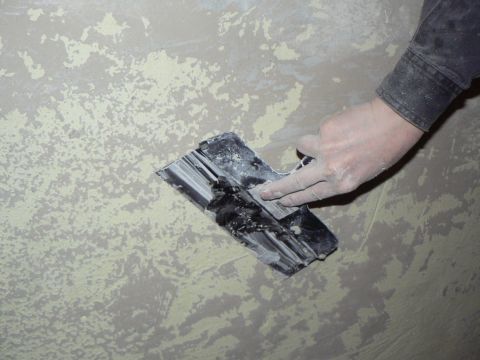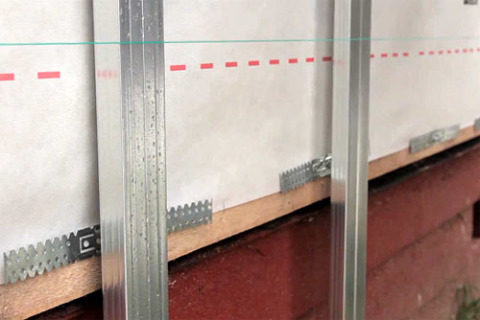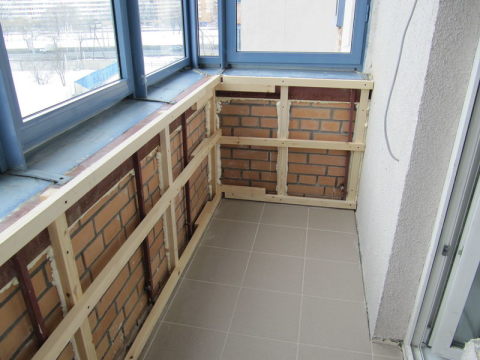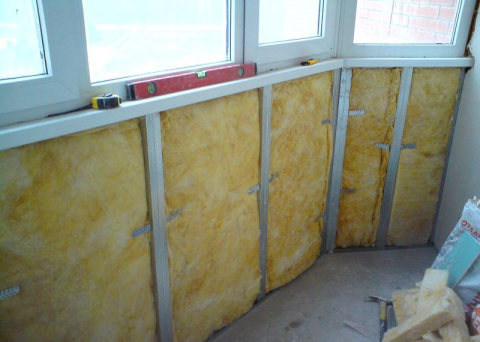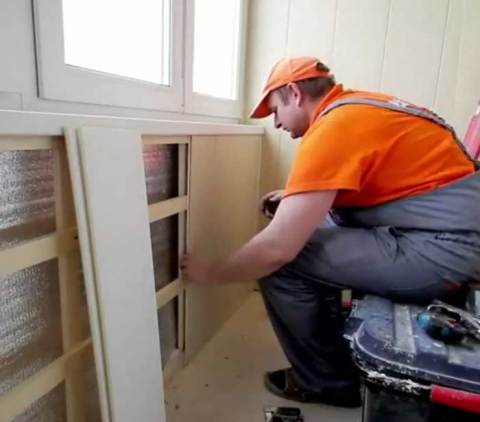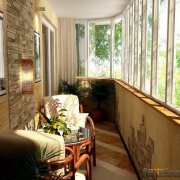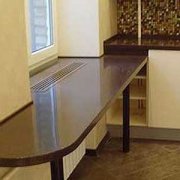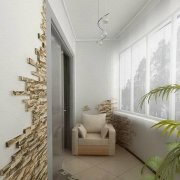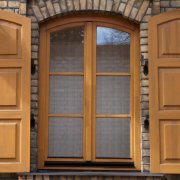How to decorate the walls on the balcony: modern options
How to sheathe the walls on the balcony are thought by many owners. After all, the choice of material is very large. Here it is necessary to approach first of all from the purpose of this room. After all, it is quite different. There are combined with the room, but there are just cold.
So in a noya article we will figure out what materials and when it is better to apply. Also in the video in this article and photo you can see ready-made solutions that may suit you.
The content of the article
Balcony options and finishes
Until recently, many balconies were just a warehouse of unnecessary things. Children's bicycles, old skis, toys and old shoes could lie for years without use. Now the attitude to this room has changed.
Attention: The better to finish the walls on the balcony depends on the type of balcony, on its purpose and on the premises that are located nearby.
- The use of modern finishing, heat-insulating and soundproof materials allows you to create optimal, comfortable conditions in this room.
- With a skillful approach to decoration, a balcony can become a comfortable place to relax, and not just a place for hanging clothes.
- On the open balcony, the choice for decoration is significantly limited. Many finishing materials do not respond well to external weather conditions. It is necessary to take into account temperature differences, humidity and exposure to sunlight.
Cold balcony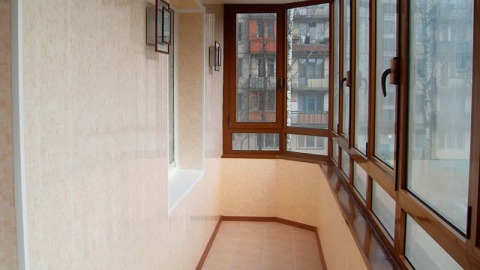 | If you plan to use additional space as a room for storing things or drying clothes, then “cold” insulation is suitable.
|
| Warm balcony | The loggia, insulated according to all the rules, can become a continuation of the room or be a separate room. In such a room, insulation must pass in accordance with all the rules, in compliance with all installation technologies. Sometimes it will be necessary to remove the balcony wall in order to expand the space.
|
| Combined balcony | There is no problem to combine the loggia with the room.
|
We select the necessary material
To choose the finishing materials for the loggia, you need to use the following tips:
- The material must be resistant to ultraviolet radiation;
- Choose materials with a long shelf life;
- Do not forget that on "cold" balconies at different times of the year there will be a difference in temperature and humidity;
Attention: If you are making a cold room, then you need to think about its isolation. After all, you can not allow cold air to enter the room.
When carrying out finishing work, you can use various materials:
- Lining - euro lining of various types and materials;
- MDF
- PVC panels;
- Plasterboard panels as a basis for decoration;
- Ceramic tiles and artificial stone;
- Stucco made in different techniques.
Lining
Lining is a classic finish (seeLining decoration: features of work performance) It has been used for balconies and loggias since Soviet times.
Shaped rail and clapboard are the main components of this type of finish. There are differences in the processing of the edges of the rails. The standard version has right angles, while the softline has rounded corners.
You can choose two main types of laying lining, each of which will suit your type of room.
Here the most influential factor will be the size of the balcony or loggia itself:
| Vertical laying | This option is suitable for installation in rooms where low ceilings or dark color finishes. Also in this way you can visually raise the ceiling. |
| Horizontal lining mount | The horizontal option has its undeniable advantages:
|
PVC panels
Plastic lining, more resistant to low temperatures and high humidity.
- It tolerates temperature extremes and high humidity. Wet cleaning can be done without problems.
- PVC panels - Suitable material for open loggias and balconies. A rich color palette allows you to choose the right color. Modern technology allows you to diversify the texture of the material.
- Matte or glossy surfaces will help to use the finish in different styles. Individual elements are fastened with nails along the edge of the rail. There are models using special fasteners.
- For the design of corners, slopes and openings, additional plastic elements are used.
MDF panels
Plastic panels and MDF will diversify the interior of the loggia (see.Decorating a balcony with MDF panels is not a bad way to ennoble a room).
- Pressed wood chip panels can be veneered with different types of wood. If the price of such panels is high, then you can choose a more economical option.
- Laminated film panels are available. Material for loggias and balconies is better to use moisture resistant, even if the room is well insulated. Additionally, the surface of MDF is better to be varnished.
- The same material can be used to finish niches and built-in cabinets.
Caution: This material is moisture resistant. But there are limitations. If you get water on your balcony, then this type of panel should not be installed. But if your balcony is combined with the room, then this material can be used without problems.
Drywall
Drywall is suitable for organizing additional decorative elements. It is a good base for painting walls, it can be glued with wallpaper or tile. Installation technology is quite simple.
- Under such a coating, you can hide the imperfections of the walls. A profile frame is attached to the rough surface. Simultaneously with the installation of the frame, you can mount the wiring. The whole structure is fastened with self-tapping screws, they are mounted with a step of 30 cm. The joints between the sheets and the heads of the self-tapping screws are coated with putty. If necessary, additional impregnation of the entire surface is performed.
- Further decoration of the loggia is carried out taking into account the design decisions made in the main room.
- On the balcony or loggia, you can install additional lighting or air conditioning. Built-in wardrobes and shelves not only decorate the interior, but also help organize a storage system.
Making the crate
Regardless of how to decorate the walls on the balcony, any finishing material is attached to the crate. This work can be completely done with your own hands and not bear the costs of the craftsmen.
Let's look at this question in more detail:
| Training | Here we do an inspection of the room. Completely remove the old coating. The junction of the balcony slab to the wall should be airtight and not leak water.
|
| Choose the material of the crate | It can be made of metal or wood. The first option is better to tolerate a humid environment, but more difficult to process. In the second case, it will be necessary to do a preliminary treatment with antiseptics and only after that do the installation. |
| Lathing mount | At this stage, we need to make the correct placement of the crate. It should be in one axis. For a balcony along the wall, measure and pull the line diagonally and put marks on the walls along the height of the crate material. First, the extreme beams are fastened and then intermediate ones, which should also be in the same plane. |
| Insulation mount | Walls on the balcony should be insulated, this will reduce heating costs. We place the insulation between the rails, and it can not be deformed, otherwise it loses its properties. |
| Finishing material fastening | And now the finishing material is attached to the crate. Depending on which mount you have chosen and done, there are a lot of materials and you can read about installing any of them on the pages of our website. |
Finish the balcony walls also under the general design, if the room is combined with the room. If not, then choosing a finishing material and be sure to make insulation and check the fastening of the balcony to the wall. After that, the instruction will help you do everything yourself and in a short time.
